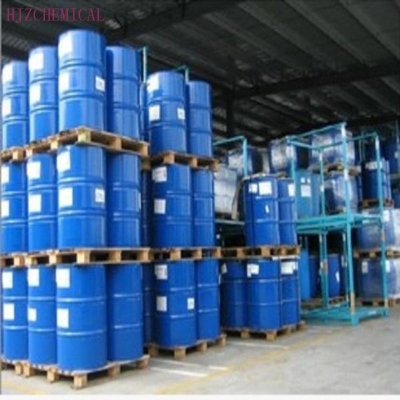-
Categories
-
Pharmaceutical Intermediates
-
Active Pharmaceutical Ingredients
-
Food Additives
- Industrial Coatings
- Agrochemicals
- Dyes and Pigments
- Surfactant
- Flavors and Fragrances
- Chemical Reagents
- Catalyst and Auxiliary
- Natural Products
- Inorganic Chemistry
-
Organic Chemistry
-
Biochemical Engineering
- Analytical Chemistry
- Cosmetic Ingredient
-
Pharmaceutical Intermediates
Promotion
ECHEMI Mall
Wholesale
Weekly Price
Exhibition
News
-
Trade Service
Since 2015, China's new energy vehicle sales have soared, and the scrap of power batteries has also soared
.
The industry expects that the cumulative scrap of power batteries this year will be about 20,000-40,000 tons
.
The recycling and reuse of new energy vehicle batteries has become a problem
that cannot be ignored.
The service life of the power lithium battery is about 20 years, but for the car, it can only be scrapped in 3-5 years, because its capacity decays to less than 80% of the initial capacity, the cruising range of the electric vehicle will be significantly reduced, and the power battery must be replaced for 3-5 years, so the high price also limits the important factors
of the promotion of electric vehicles 。 According to experts from the China Automotive Technology and Research Center, it is expected that by 2015, the cumulative scrap of China's power batteries will be about 20,000-40,000 tons, and around 2020, the cumulative scrap of power batteries for pure electric passenger cars and hybrid passenger vehicles in China will reach 12-170,000 tons
.
It is reported that the technical route of recycling power batteries is quite complicated, such as in the treatment of waste lithium batteries, it is first necessary to pretreat them, including discharge, disassembly, crushing, and sorting; Disassembled plastic and iron shells can be recycled; Then the electrode material is alkali leached, acid leached, and then extracted
after various procedures.
This complex process has put many recycling companies off
.
From the current situation in Europe and the United States, some manufacturers are vigorously promoting the research and utilization of power battery recycling and making technical reserves
for large-scale commercial recycling.
For example, Umicore Belgium has developed ultra-high temperature technology to process used lithium batteries
.
Toyota Motor Corporation is also cooperating with Umicore to recycle Toyota's lithium batteries
.
A company in the United States did the opposite, using liquid nitrogen to process lithium batteries in an ultra-low temperature environment, making their chemical properties inactive
.
Even Germany, which has no power battery manufacturers, is also studying the construction of
a recycling network system.
It is understood that at present, China's power battery research is mainly focused on improving its safety performance and service life, and the recycling link is quite small, or even seriously disjointed
.
As a power battery, lithium-ion batteries contain a large number of toxic heavy metal elements such as mercury, cadmium, and lead, and its positive and negative electrode materials, electrolyte solutions and other substances also have a considerable impact on the environment, and the future treatment of tens of thousands of tons per year is indeed a problem
.
With the overall rise in demand for electric vehicles, lithium batteries will be in short supply by 2017, so domestic experts call for early research on the recycling and reuse of power batteries and the establishment of a special recycling agency
.
Since 2015, China's new energy vehicle sales have soared, and the scrap of power batteries has also soared
.
The industry expects that the cumulative scrap of power batteries this year will be about 20,000-40,000 tons
.
The recycling and reuse of new energy vehicle batteries has become a problem
that cannot be ignored.
The service life of the power lithium battery is about 20 years, but for the car, it can only be scrapped in 3-5 years, because its capacity decays to less than 80% of the initial capacity, the cruising range of the electric vehicle will be significantly reduced, and the power battery must be replaced for 3-5 years, so the high price also limits the important factors
of the promotion of electric vehicles 。 According to experts from the China Automotive Technology and Research Center, it is expected that by 2015, the cumulative scrap of China's power batteries will be about 20,000-40,000 tons, and around 2020, the cumulative scrap of power batteries for pure electric passenger cars and hybrid passenger vehicles in China will reach 12-170,000 tons
.
It is reported that the technical route of recycling power batteries is quite complicated, such as in the treatment of waste lithium batteries, it is first necessary to pretreat them, including discharge, disassembly, crushing, and sorting; Disassembled plastic and iron shells can be recycled; Then the electrode material is alkali leached, acid leached, and then extracted
after various procedures.
This complex process has put many recycling companies off
.
From the current situation in Europe and the United States, some manufacturers are vigorously promoting the research and utilization of power battery recycling and making technical reserves
for large-scale commercial recycling.
For example, Umicore Belgium has developed ultra-high temperature technology to process used lithium batteries
.
Toyota Motor Corporation is also cooperating with Umicore to recycle Toyota's lithium batteries
.
A company in the United States did the opposite, using liquid nitrogen to process lithium batteries in an ultra-low temperature environment, making their chemical properties inactive
.
Even Germany, which has no power battery manufacturers, is also studying the construction of
a recycling network system.
It is understood that at present, China's power battery research is mainly focused on improving its safety performance and service life, and the recycling link is quite small, or even seriously disjointed
.
As a power battery, lithium-ion batteries contain a large number of toxic heavy metal elements such as mercury, cadmium, and lead, and its positive and negative electrode materials, electrolyte solutions and other substances also have a considerable impact on the environment, and the future treatment of tens of thousands of tons per year is indeed a problem
.
With the overall rise in demand for electric vehicles, lithium batteries will be in short supply by 2017, so domestic experts call for early research on the recycling and reuse of power batteries and the establishment of a special recycling agency
.
The service life of the power lithium battery is about 20 years, but for the car, it can only be scrapped in 3-5 years, because its capacity decays to less than 80% of the initial capacity, the cruising range of the electric vehicle will be significantly reduced, and the power battery must be replaced for 3-5 years, so the high price also limits the important factors
of the promotion of electric vehicles 。 According to experts from the China Automotive Technology and Research Center, it is expected that by 2015, the cumulative scrap of China's power batteries will be about 20,000-40,000 tons, and around 2020, the cumulative scrap of power batteries for pure electric passenger cars and hybrid passenger vehicles in China will reach 12-170,000 tons
.
It is reported that the technical route of recycling power batteries is quite complicated, such as in the treatment of waste lithium batteries, it is first necessary to pretreat them, including discharge, disassembly, crushing, and sorting; Disassembled plastic and iron shells can be recycled; Then the electrode material is alkali leached, acid leached, and then extracted
after various procedures.
This complex process has put many recycling companies off
.
From the current situation in Europe and the United States, some manufacturers are vigorously promoting the research and utilization of power battery recycling and making technical reserves
for large-scale commercial recycling.
For example, Umicore Belgium has developed ultra-high temperature technology to process used lithium batteries
.
Toyota Motor Corporation is also cooperating with Umicore to recycle Toyota's lithium batteries
.
A company in the United States did the opposite, using liquid nitrogen to process lithium batteries in an ultra-low temperature environment, making their chemical properties inactive
.
Even Germany, which has no power battery manufacturers, is also studying the construction of
a recycling network system.
It is understood that at present, China's power battery research is mainly focused on improving its safety performance and service life, and the recycling link is quite small, or even seriously disjointed
.
As a power battery, lithium-ion batteries contain a large number of toxic heavy metal elements such as mercury, cadmium, and lead, and its positive and negative electrode materials, electrolyte solutions and other substances also have a considerable impact on the environment, and the future treatment of tens of thousands of tons per year is indeed a problem
.
With the overall rise in demand for electric vehicles, lithium batteries will be in short supply by 2017, so domestic experts call for early research on the recycling and reuse of power batteries and the establishment of a special recycling agency
.
TargetA("divcontent"); TargetB();
Disclaimer: Some of the public information collected by this website comes from the Internet, and the purpose of reprinting is to convey more information and for network sharing, which does not mean that this site agrees with its views and is responsible for its authenticity, nor does it constitute any other suggestions, and the content of the article is for reference
only.
If you find a work on the website that infringes your intellectual property rights, please contact us and we will promptly modify or delete
it.
Disclaimer: Some of the public information collected by this website comes from the Internet, and the purpose of reprinting is to convey more information and for network sharing, which does not mean that this site agrees with its views and is responsible for its authenticity, nor does it constitute any other suggestions, and the content of the article is for reference
only.
If you find a work on the website that infringes your intellectual property rights, please contact us and we will promptly modify or delete
it.
only.
If you find a work on the website that infringes your intellectual property rights, please contact us and we will promptly modify or delete
it.
Share to:
Share to:
Responsible editor: Pan Jiayan
Responsible editor: Pan Jiayan
Responsible editor: Pan JiayanPrevious:Chinese enterprises won two nuclear power orders in Europe to raise their national prestige
Next:Belgium's first wind-powered train was put into operation
Previous:Chinese enterprises won two nuclear power orders in Europe to raise their national prestige
Chinese companies won two nuclear power orders in EuropeNext:Belgium's first wind-powered train was put into operation
Belgium's first wind-powered train is put into operationRelated information
Related information
function searchesc(edm) {
var b = edm. innerHTML; window.
open("/news/search.
html?text=" + encodeURI(b)); } Power battery new energy
- [2022-10-31]The global power battery recycling market is expected to reach $5.
3 billion in 2026 - [2022-11-10]China's exports of new energy passenger vehicles reached 103,000 units in October
- [2022-11-10]China's retail sales of new energy passenger vehicles in October were 556,000 units, a year-on-year increase of 75.
2%; - [2022-11-10]China's wholesale sales of new energy passenger vehicles in October were 676,000 units, a year-on-year increase of 85.
8%; - [2022-11-10]In October, China's passenger car market retailed 1.
84 million units, a year-on-year increase of 7.
3%;
- [2022-10-31]The global power battery recycling market is expected to reach $5.
3 billion in 2026 - [2022-11-10]China's exports of new energy passenger vehicles reached 103,000 units in October
- [2022-11-10]China's retail sales of new energy passenger vehicles in October were 556,000 units, a year-on-year increase of 75.
2%; - [2022-11-10]China's wholesale sales of new energy passenger vehicles in October were 676,000 units, a year-on-year increase of 85.
8%; - [2022-11-10]In October, China's passenger car market retailed 1.
84 million units, a year-on-year increase of 7.
3%;
3 billion in 2026
3 billion in 2026
2%;
2%;
8%;
8%;
84 million units, a year-on-year increase of 7.
3%;
84 million units, a year-on-year increase of 7.
3%;







